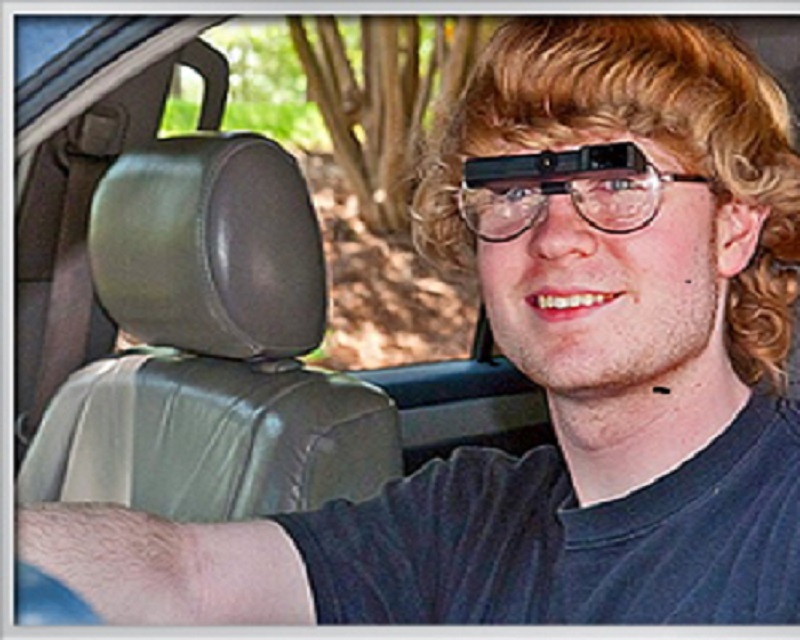This content is also available in:
Español (Spanish)
Are you someone with low vision and wondering if driving with bioptic lenses is possible? Discuss your eligibility with your eyecare professional and state driver’s license agency. If you are eligible, driving with low vision and bioptics is your decision.
Continue reading for more information and learn more during The Basics of Bioptics and Bioptic Driving webinar. Presenters Chuck Huss, COMS, Driver Rehabilitation Specialist, and former Coordinator, Low Vision Driver Services, West Virginia Rehabilitation Center, and Steve Kelley, CVRT, CATIS, will provide an overview of bioptic lens systems, basic requirements for bioptic driver readiness, misconceptions of bioptic driving, state legislation and advocacy initiatives, and more.
What is a Bioptic Lens System?
 Person Driving Using Bioptics
Person Driving Using Bioptics
Chuck Huss states, “A bioptic lens system is a combination two-lens optical system with a telescope, or telescopes, attached to the lens of a pair of eyeglasses. The telescope is placed on the eyeglass lens just above one’s normal line of sight.” Optometrists or ophthalmologists who specialize in low vision will prescribe bioptic lenses — available in a number of styles, sizes, and powers. The prescription lenses help accommodate people who have known central vision loss. There are two types of bioptic lens systems: Galilean and Keplerian.
How Do Bioptics Help with Driving?
Most of the time a low-vision driver uses the primary eyeglass lens, the carrier lens. When it is necessary to check detail or road hazards, the driver uses the miniature telescopic lens but only intermittently. Driving with bioptic lenses requires distance viewing skills, object awareness skills, and basic bioptic usage skills. Most states require training before getting a license to drive with bioptic lenses.
Chuck Huss states that drivers with low vision must have the following:
- Stable, long-standing eye condition
- Best corrected Visual acuity between 20/70-20/200 inclusive
- Field of view of 120° H, 80° V.
- Enhanced acuity to 20/60 or better through scope.
- Color awareness to differentiate color change, lane markings, road signs, brake lights, turn signals, and emergency vehicles.
Additional Concerns About Driving with Low Vision
Glare and contrast sensitivity both affect driving with low vision. Contrast sensitivity is your ability to detect differences between light and dark areas. Anne Riddering, OTR/L, CLVT, COMS, states, “Increasing the contrast between an object and its background will generally make an object more visible. Usually, the strongest contrast is black-on-white or white-on-black. Seeing curbs and faded road surface markings are examples of low contrast driving activities.” Snow, fog, and rain also make visibility worse.